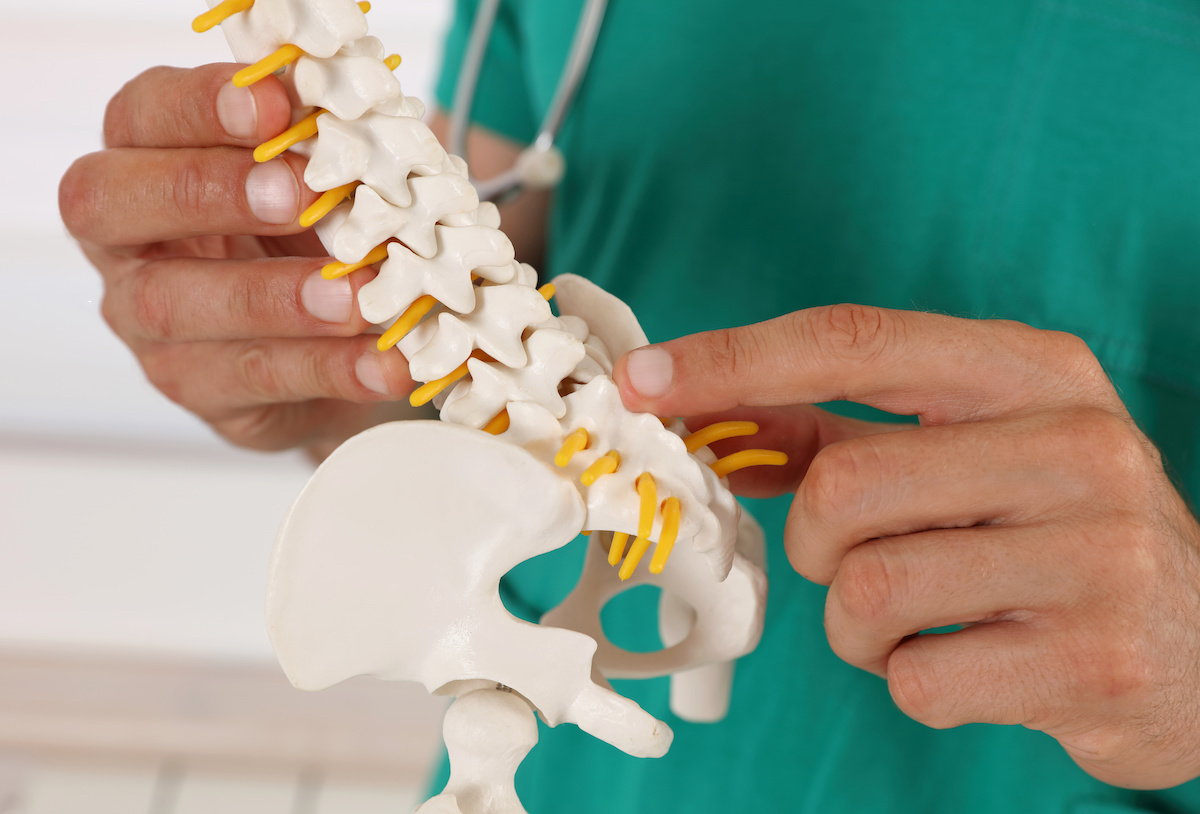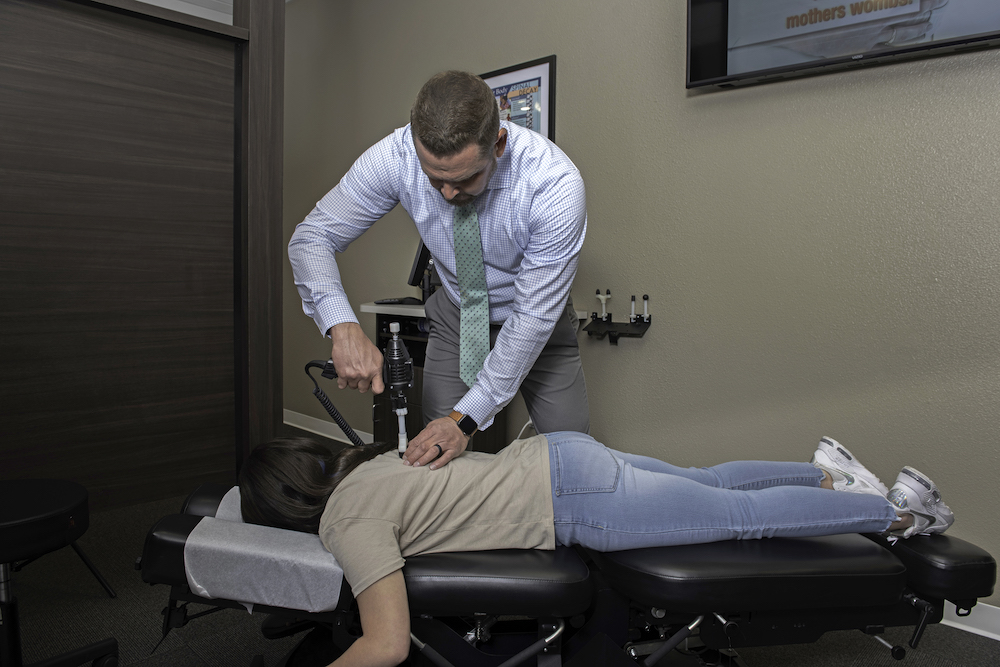What to Know About a Herniated Disc
6 min read

Back pain is one of life’s most common health problems. And it’s no wonder because the spine is very complex. Your spine is made up of 24 bones called vertebrae. In between each vertebra, there is a soft, liquid-filled disc that gives a cushion between the vertebrae. If a disc tears, also referred to as a herniated disc, the liquid leaks from the disc and irritates nearby nerves. Most ruptures happen in the lower back or lumbar region. This kind of pain can be really intense making it very difficult to do daily activities. It could even cause other complications such as back and neck pain or tingling and numbness.
Since most people (somewhere in the neighborhood of 80%!) have back pain at some time in their lives, it’s important to learn what you can do to prevent it and what to do if you start to feel pain that might be caused by a herniated disc.
Why do spinal discs rupture?
The most common causes of a herniated disc are injury, degeneration from aging, or being overweight. Injuries can happen when you strain to lift or move something or suddenly jerk or twist your spine. Aging causes wear on the whole body, including your spine. As the coating on the discs become thinner, they can rupture easier. If you are overweight, the added stress on your spine can eventually cause the discs to herniate.
What are the signs of a herniated disc?
Symptoms vary, depending on how bad the tear is and if the gel irritates nearby nerves. If it’s not irritating any nerves, you might not have pain. However, you may have numbness and muscle weakness when you stand up or walk. You may stumble or not be able to lift your arms or hold onto things.
If the disc gel irritates your nerves, you will likely have pain that you can’t ignore and/or numbness in the legs or arms. The pain is usually worse when you’re active and improves when you rest. If the herniated disc is in your lower back, you may feel:
- Pain that spreads over your buttocks and runs down the back of your leg; caused by the gel irritating the sciatic nerve. Herniated discs are a common cause of sciatica.
- Tingling or numbness in one or both legs, feet, or toes
- Sharp, electric-shock-like pain
- Pain in your lower back or leg that doesn’t go away
If the herniated disc happens in your neck (cervical vertebrae), it can cause:
- Sharp pain in your neck or shoulder blades
- Tingling in your arms or shoulders
- Numbness or muscle weakness
Check here for more information about the signs and symptoms of a herniated disc.
Can a herniated disc heal on its own?
Yes, it will usually heal by itself if given enough time. You’ll have to be patient and follow your treatment plan. However, if you don’t get better in a few months, talk to your doctor about other options.
How long will it take a herniated disc to heal?
A herniated disc can take anywhere from a few days to a few months to heal. The time can vary based on the severity of damage, and how well you follow your treatment plan.
What are chiropractic treatments for a herniated disc?
Consider chiropractic care for long-lasting relief. Our chiropractors may suggest traction to stretch the spine. This can take the pressure off the ruptured area and, with several sessions, it can help speed up recovery.
If you elect chiropractic treatment for a herniated disc, there are several options available. Common chiropractic treatments for herniated discs include:
- Spinal decompression: This is a type of motorized spinal traction that is used to reduce the pressure on the spinal discs. This treatment is done by stretching the spine for 15-30 per treatment. The treatments may be scheduled over a period of several weeks or longer, depending on the severity of your condition.
- Cold laser therapy: A method in which a low-intensity laser is used to stimulate cells, and as it does that, blood rushes to the impacted area and promotes healing.
- Electrical Muscle Stimulation (EMS): A technique that delivers light electrical pulses to the muscles near the area of the back that hurts. While this doesn’t repair the disc itself, it can help relieve nearby back muscle pain.
What are other treatment options for a herniated disc?
- Over-the-counter pain/inflammation medication like aspirin, ibuprofen, or naproxen. Although meds won’t solve the problem, they can provide enough relief so you can continue to heal and return to light activity.
- Steroid injections into the area around the spine can settle the irritated nerves.
- Physical therapy can provide some relief while your back heals.
- Surgery may be recommended if none of the above provides relief. Most people don’t need surgery for herniated discs. They find that time, mild pain meds, and chiropractic treatment can prevent surgery and the potential risks of surgery.
How can I prevent a herniated disc?
While there’s not much you can do about getting older, there are some choices you can make in your lifestyle habits that can reduce the likelihood of herniated discs.
- Get regular exercise to strengthen back muscles and keep you mobile and flexible. Focus on overall muscle strength, especially your core muscles. Strong core muscles support your spine and prevent pain when you lift, bend or exercise. Always tighten your stomach muscles when exercising. This provides instant support for your lower back. Walking, swimming or biking are great low-impact activities. Many people enjoy yoga, Pilates, and tai chi to improve their core muscles and balance.
- If you’re at-risk for herniated disk because of your age and/or your weight, try to avoid high-impact sports such as running or those with repetitive motions. This doesn’t mean skip exercise for your back. Some strength training can be good to keep your core and back muscles strong. A strong and flexible back takes the pressure off your discs and the pads between them. If you have a history of back pain, talk with your doctor before starting a new exercise routine or sport.
- Get to and maintain a healthy weight. Extra weight puts more strain on your spine, allowing the discs to break down at an earlier age.
- Eat a healthy diet. Focus on fruits and vegetables, green leafy vegetables, whole grains, and lean protein such as fish, chicken, turkey, and eggs.
- Drink plenty of water and other non-caffeinated beverages. The discs of your spine are made up mostly of water, so try to sip on water throughout the day to stay hydrated.
- Improve your posture. Notice if you slouch when you sit, walk, check your phone, or work on a computer. If you sit a lot, get up and move every 30 minutes. Mirrors are great for reinforcing better posture habits.
- Consider changing your sleeping position. Side sleepers have less back pain. Back sleeping is best at preventing back pain. But if you are a committed stomach sleeper, use a soft pillow (or no pillow) to keep your neck in alignment.
- Use correct, supportive form when lifting. Never bend at the waist. Instead, bend your knees and use your legs and buttocks muscles to lift. Keep your feet shoulder-width apart and your back and head upright. Don’t twist when lifting; instead, reposition your feet to turn your body.
- Avoid wearing high heels. They throw off your spinal alignment, especially as you age. They also affect your balance and make falls and injuries more likely.
- Quit smoking. The toxins in cigarettes and cigars affect your spine by preventing spinal discs from absorbing the nutrients that maintain their structure. Smokers are three times more likely to have serious back pain.
- Consider getting regular spinal adjustments from a well-trained chiropractor. These adjustments have been proven through many research studies to place your body in the proper position to help heal itself. Spinal adjustments do more than relieve back pain. They relieve pressure and pain caused by inflammation and swelling. At Village Chiropractic, we offer a combination of state-of-the-art therapies to address your specific needs, including regular spinal adjustments to address herniated disc and other back issues.
Adjustments can correct poor posture, restore spinal alignment, and improve flexibility in your joints. Other non-surgical chiropractic therapies used to treat a herniated disc include spinal decompression, cold laser therapy to increase healing blood flow, electrical muscle stimulation, and therapeutic exercise. If you’d like to get an adjustment or discuss how to help relieve back pain caused by a herniated disc contact our office in The Woodlands for an appointment with one of our chiropractors.





